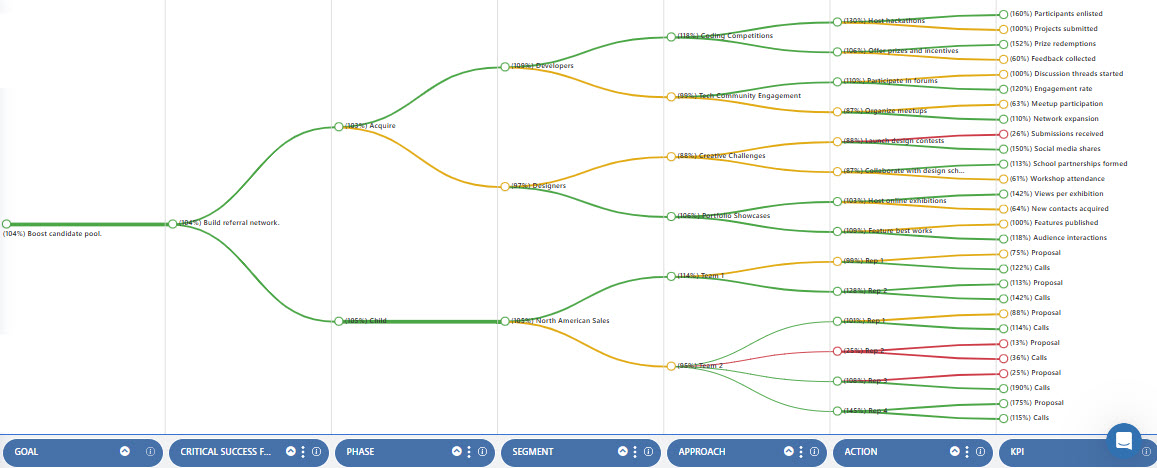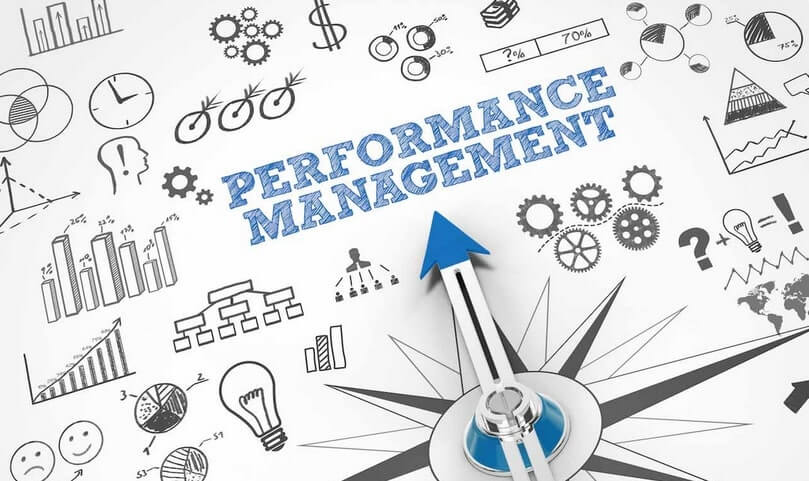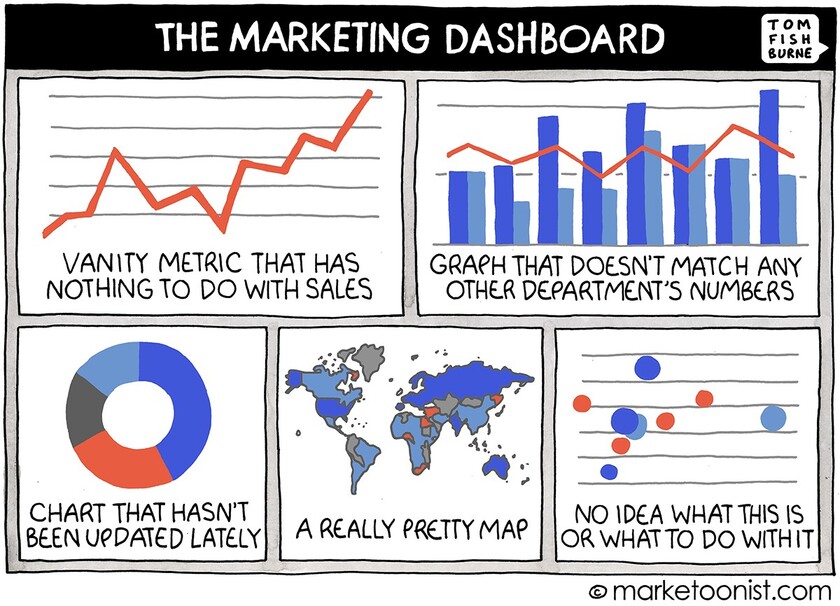In today’s data-driven world, organizations are inundated with information from every direction. Yet
despite having access to vast amounts of data, many businesses struggle to translate this information
into meaningful insights that drive growth and improve performance. One of the biggest challenges
companies face is understanding which metrics truly matter and how those metrics connect to their
overall strategic goals. This is where building a strategic map that aligns your business goals with
actionable Key Performance Indicators (KPIs) becomes indispensable.
What Is a Strategic Map?
A strategic map is a visual framework that links high-level business goals to specific, measurable KPIs
through a clear hierarchy of objectives and actions. Unlike traditional KPI dashboards that simply report
numbers, a strategic map shows the cause-and-effect relationships between your company’s goals, the
critical success factors, and the KPIs that measure progress toward those goals.
By creating this alignment, organizations can ensure that every team, department, and individual
understands not only what they need to accomplish but why it matters. This clarity transforms vague
aspirations into actionable plans and measurable outcomes.
The Importance of Aligning Goals and KPIs
1. Turning Vision into Action
Every organization has a vision or set of strategic goals it aims to achieve. However, many companies fail
to bridge the gap between these high-level goals and the day-to-day activities that drive results. Without
this connection, teams may focus on tasks that do not contribute meaningfully to the company’s
success, leading to wasted effort and missed opportunities.
A strategic map solves this problem by illustrating how lofty goals are attained by successive steps of in a
layered approach until we get to actionable KPIs that are directly tied to business objectives.
This linkage ensures that each KPI is not just a number pulled from a report but a calculated metric that
reflects progress toward a specific goal. It turns abstract strategy into concrete action.
2. Clarity, Focus, and Accountability
When goals and KPIs are aligned and clearly mapped, everyone in the organization gains a shared
understanding of priorities. This clarity helps eliminate confusion about what matters most and what
success looks like.
Focus: Teams can prioritize their work based on the KPIs that have the greatest impact on strategic goals, avoiding distractions from vanity metrics or irrelevant data.
Accountability: With transparent KPIs linked to goals, individuals and teams are held accountable for their contributions. They can see how their performance affects the broader organization, which fosters ownership and motivation.
Engagement: Employees who understand how their work fits into the bigger picture are more engaged and committed. They feel valued because they know their efforts make a difference.
3. Better, Faster Decision-Making
In a competitive business environment, timely and informed decisions are critical. A strategic map with
aligned KPIs provides leaders with a clear picture of where the organization stands relative to its goals.
When performance indicators fall short, managers can quickly identify the root causes and take
corrective actions before problems escalate. This proactive approach minimizes risks and maximizes
opportunities.
Moreover, aligned KPIs enable data-driven decision-making at all levels of the organization. Instead of
relying on intuition or incomplete information, teams can use real-time insights to adjust strategies,
allocate resources effectively, and optimize processes.
4. Adaptability and Continuous Improvement
Business environments are dynamic, and goals often evolve due to market shifts, new technologies, or
competitive pressures. A strategic map is not a one-time exercise but a living document that can be
updated as priorities change.
By regularly reviewing and refining KPIs in relation to strategic goals, organizations maintain agility. They
can quickly pivot focus, set new targets, and ensure all efforts remain aligned with current business
needs.
This continuous improvement cycle drives sustained performance gains and helps companies stay ahead
of the competition.
How to Build an Effective Strategic Map
There is a logical flow to decision making and in the evaluation of what is important to do. The strategic
map shows an increasingly detailed dissection of the work or processes needed to accomplish a stated
goal. Here are the building blocks for a sales or marketing department:
| Step Definition | Explanation |
| Goal | Broad desired outcome. It states “what” we want to accomplish but not “how.” It states where you are going rather than how you will get there. |
| Critical Success Factor | Things that are vital for successfully achieving the Goal. |
| Phase | Stage or state we are addressing. For Marketing, it’s one of four (Engage, Acquisition, Conversion, Retention). |
| Segment | Targeted audience or function being focused on. It can be based on existing customers or new, age, gender, location, etc. |
| Approach | Short-term plan taken to achieve a critical success factor. It’s what you do, and for every critical success factor, there are several approaches. |
| Action | Precise activity or business process required to be performed to attain stated goal. |
| KPI (Key Performance Indicator) | Calculated value that is critical to the business and to attaining stated goal. |
| Target | Value assigned to Metric or KPI. |
Organizations that invest in building strategic maps aligned with actionable KPIs experience numerous
benefits:
- Improved Performance: Clear focus on what matters drives better results across sales, marketing, operations, and customer service.
- Enhanced Transparency: Everyone understands how their work contributes to success, fostering trust and collaboration.
- Greater Agility: The ability to adapt KPIs and goals quickly keeps the organization responsive to change.
- Informed Strategy: Data-driven insights lead to smarter investments and resource allocation.
- Sustained Growth: Continuous alignment and measurement fuel ongoing improvement and competitive advantage.
Conclusion: From Strategy to Success
Building a strategic map that aligns business goals with actionable KPIs is not just a best practice—it’s
essential for any organization that wants to thrive in today’s complex marketplace. This approach
transforms abstract goals into measurable actions, driving clarity, accountability, and agility.
If your organization is struggling to make sense of its data or unsure if it’s measuring the right things,
start by creating a strategic map. Connect your vision to the KPIs that truly matter and empower your
teams to focus on what drives success.
Remember, the difference between setting goals and achieving them lies in how well you align your
actions with your strategy—and that starts with a strategic KPI map.
Ready to take control of your business performance?
Explore how KPI Karta’s unique methodology can help you build strategic maps that turn your goals into
measurable results. Start your journey toward clarity and growth today.






